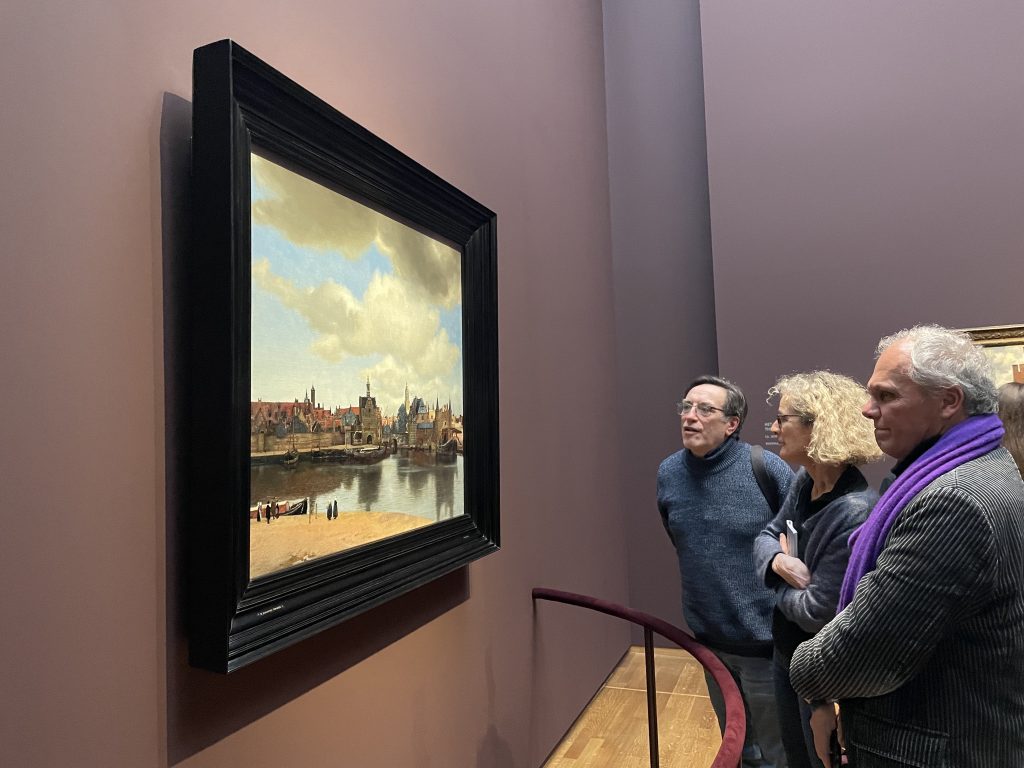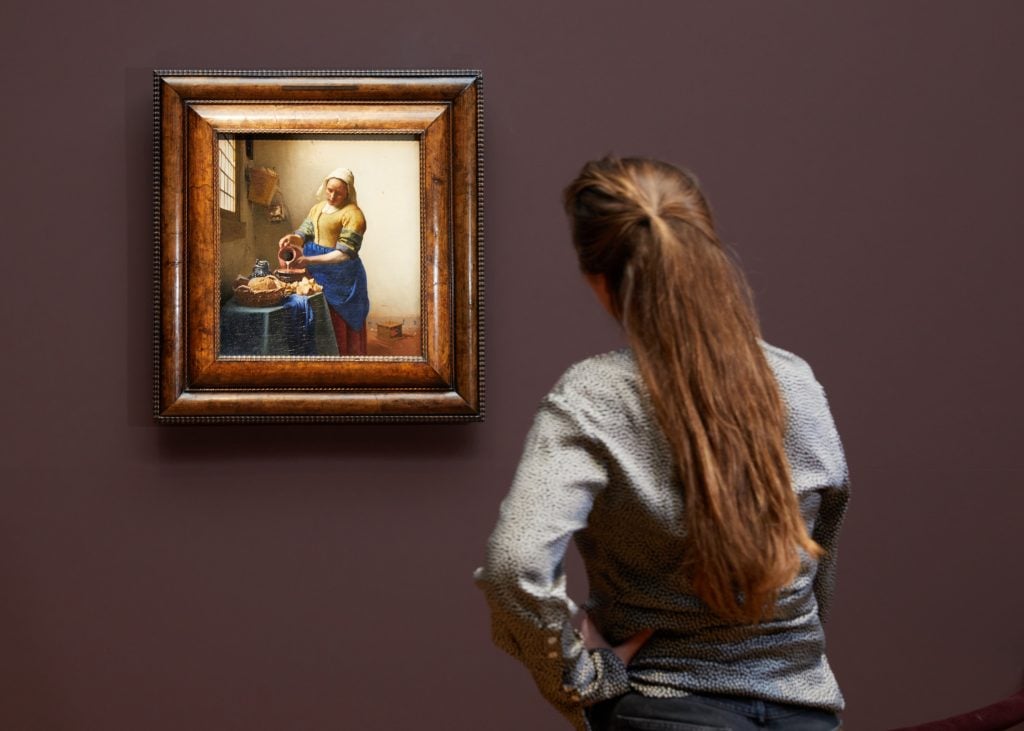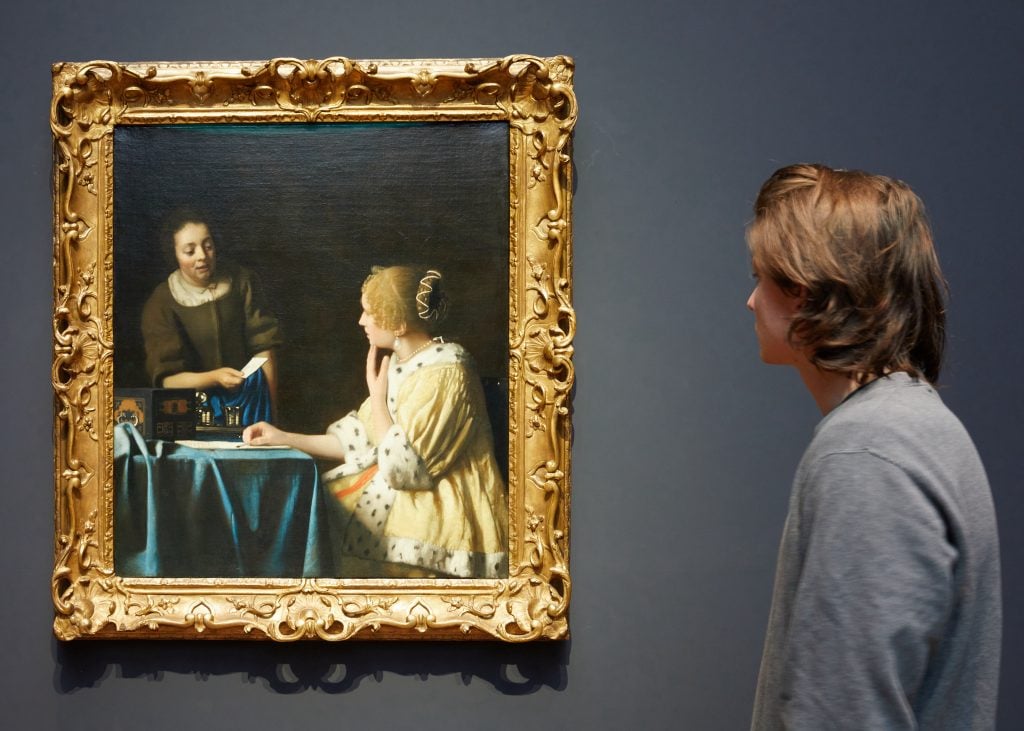The number of works on show is far from huge and the exhibition space may seem to be disproportionately spacious, and yet the Rijksmuseum has set the perfect stage for a highly anticipated, once-in-a-lifetime Johannes Vermeer exhibition—the largest ever “family reunion” of the Dutch master’s paintings.
Opening to the public on Friday, February 10, “Vermeer” at the Netherlands’s national museum of art and history presents a total of 28 out of the 37 known paintings by the artist, making the show the most complete survey of the Old Master staged in his home country.
It reunites many works that have been scattered around the world, including seven paintings that have not been back to the Netherlands in 200 years. They hang near other greatest hits that have remained in the Netherlands, including The Milkmaid (c. 1658-59) and The Little Street, both housed at Rijksmuseum, and three from the Mauritshuis in The Hague, an institution best known for being home to the enigmatic Girl with a Pearl Earring (1664-67).

Critics and journalists admired Vermeer’s View of Delft during a press preview at exhibition “Vermeer” at Rijksmuseum, Amsterdam. Photo: Vivienne Chow.
Rijksmuseum’s general director Taco Dibbits said the new exhibition is the largest since the show that ran from 1995 to 1996 by the National Gallery of Art in Washington, which brought together 21 works. “It was quite an impossible dream to have a monographic exhibition of Vermeer. But it appeared not to be impossible when we heard that Frick Collection was about to renovate. We thought, this is a chance. It’s now or never,” Dibbits said during Tuesday’s press preview, which welcomed around 150 international journalists and critics.
“Vermeer,” an assembly from 14 museums and private collections from seven countries, includes an unprecedented loan of three works from the Frick Collection, which are being shown outside of New York for the first time: Mistress and Maid (c.1664-67), Girl, Interrupted at Her Music (c.1959-61), and Officer and the Laughing Girl (c. 1657-58).
Saint Praxedis (1655), said to be based on a similar picture from around 1640 to 1645 by the Florentine artist Felice Ficherelli, is loaned from the National Museum of Western Art, Tokyo.
The museum’s curatorial team, as well as conservators and scientists, embarked on an intensive research journey in collaboration with other prestigious institutions, applying the latest technologies in an attempt to resolve the mysteries behind Vermeer’s arresting images and storied paintings and decode his painting techniques. But one of the most difficult mysteries to solve was how to stage the show in Rijksmuseum’s huge halls. “How do you exhibit 28 paintings of which most are relatively small, and depict very intimate spaces?” Dibbits noted.

The Milkmaid featured in exhibition “Vermeer”. Photo Rijksmuseum/ Henk Wildschut.
The solution was not to closely group them, but to offer as much space as possible for each painting. The museum worked with French architect and designer Jean-Michel Wilmotte to design all ten galleries of the museum’s Phillips Wing. The works are divided into 11 thematic sections tracing the artist’s roots, and searching for insights into his life and paintings. The exhibition space is so roomy that sometimes a large gallery features only one or two paintings. Galleries are decorated with classy floor-to-ceiling velvet curtains in different colors to separate the show’s themes.
But these small works are set to have a huge impact: more than 200,000 tickets have already been pre-sold as of Tuesday. “This has never happened before,” said Dibbits. Due to the size of the works, the director added that his team is limiting the amount of tickets sold to ensure that the public has a good viewing experience. The museum also declined to comment on any additional security measures in place given the ongoing attacks at European institutions by climate activists.

Installation view of Mistress and Maid at “Vermeer,” Rijksmuseum. Work on loan from the Frick Collection, New York. Photo Rijksmuseum/ Henk Wildschut.
Rijksmuseum’s spokespeople did not disclose how many visitors they were expecting in total, nor did they disclose the limit of tickets to be sold or the maximum capacity the galleries could accommodate. The institution has extended its normal run-time for an exhibition to four months for the Dutch Golden Age star; it. will extend its opening hours to 10 p.m. on Thursdays, Fridays, and Saturdays throughout the exhibition period, until June 4.
In spite of the all-star lineup, there has been at least one dispute. On view is a contested work, Girl With a Flute (c. 1665-1675)—the National Gallery of Art in Washington, D.C. has said that the small painting may not be a genuine work by Vermeer. Nevertheless, it is attributed to Vermeer on the wall text, and hangs in the show side-by-side with another painting Girl with a Red Hat (c. 1664-67).
Such a once-in-a-lifetime exhibition is likely to make history globally, and is an especially poignant show for the Dutch public. “It’s like an unprecedented family reunion,” co-curator Pieter Roelofs.
“Vermeer” will be on view form February 10 to June 4, 2023.

Girl with a Red Hat and Girl with a Flute at “Vermeer,” Rijksmuseum. Photo Rijksmuseum/ Henk Wildschut.
Feb 10 to June 4, 2023
The Rijksmuseum, Museumstraat 1, Amsterdam.
Entrance to The Rijksmuseum is FREE with the I Amsterdam City Card

